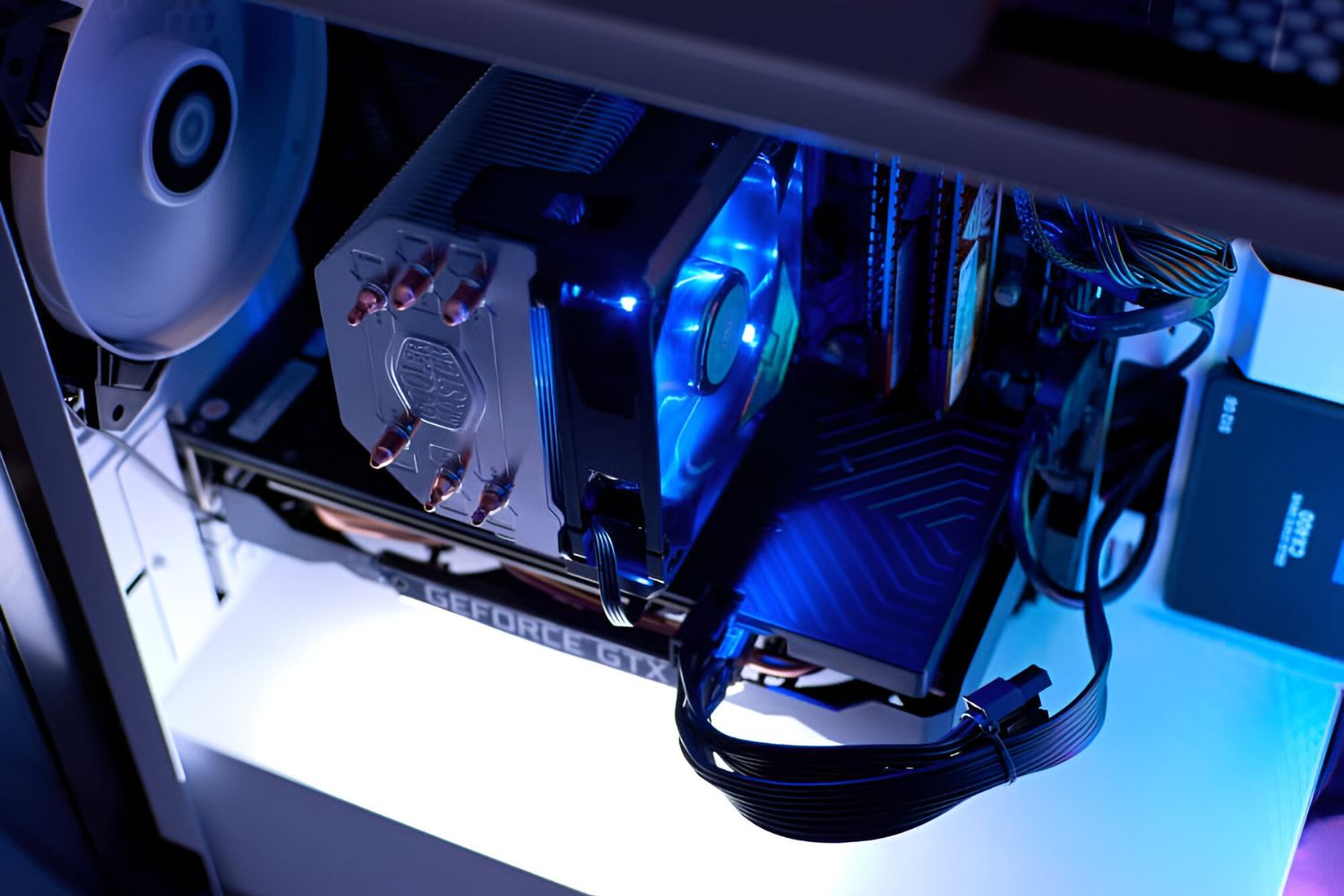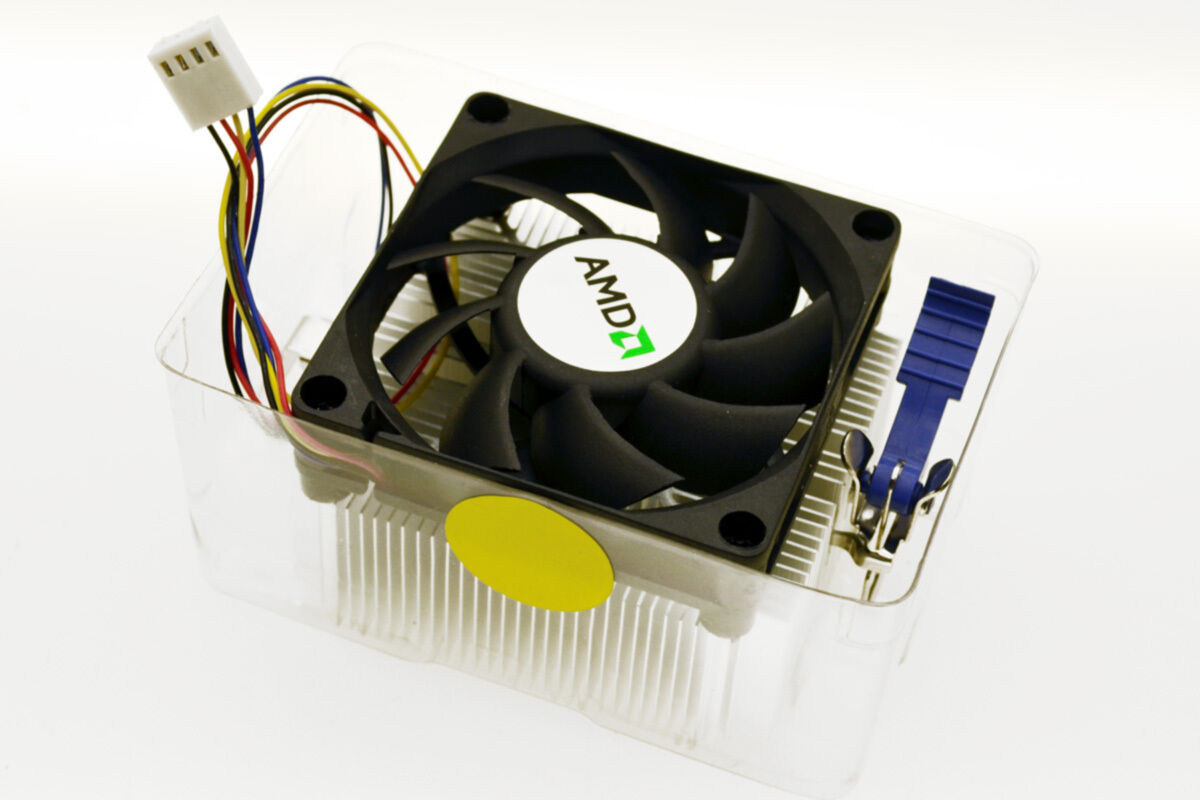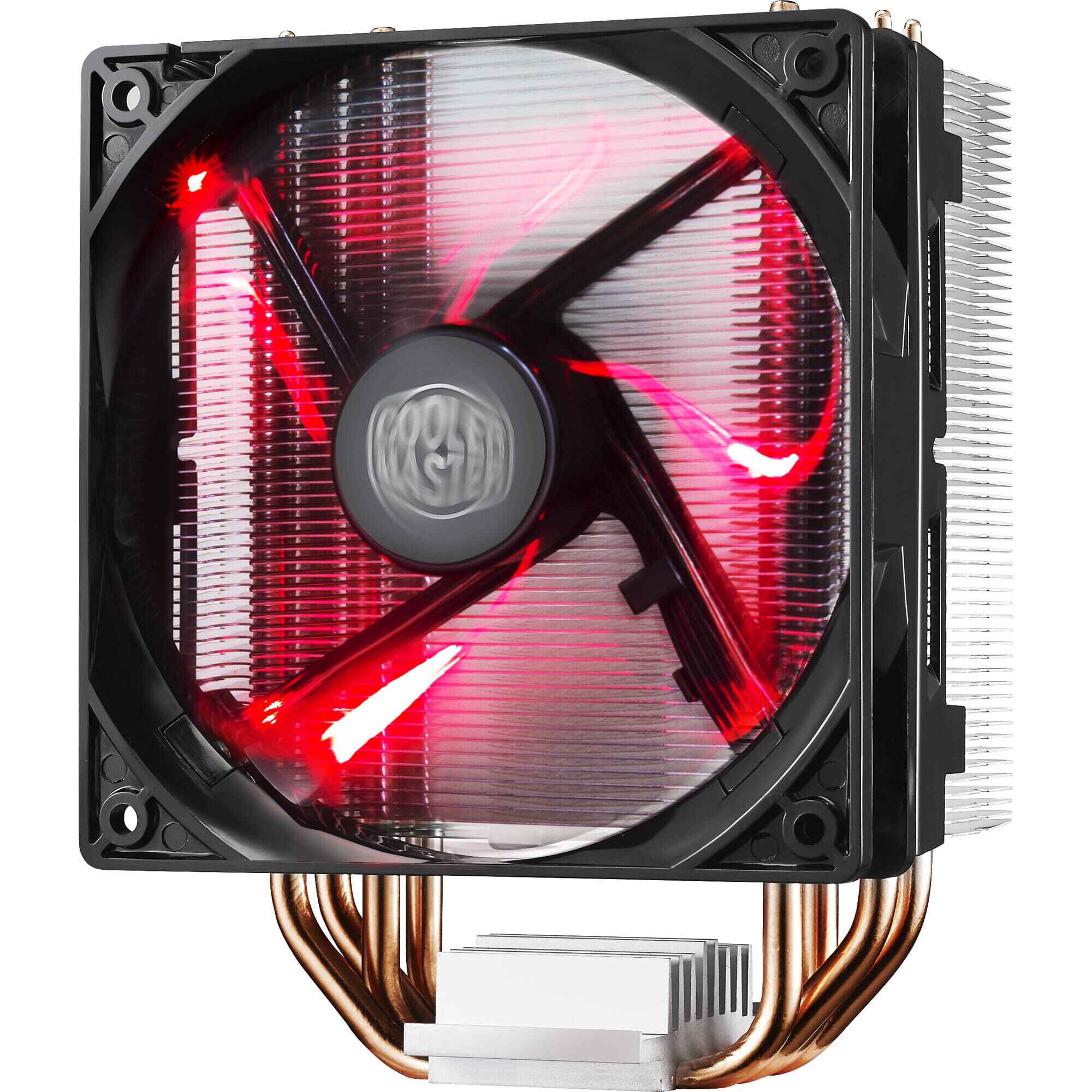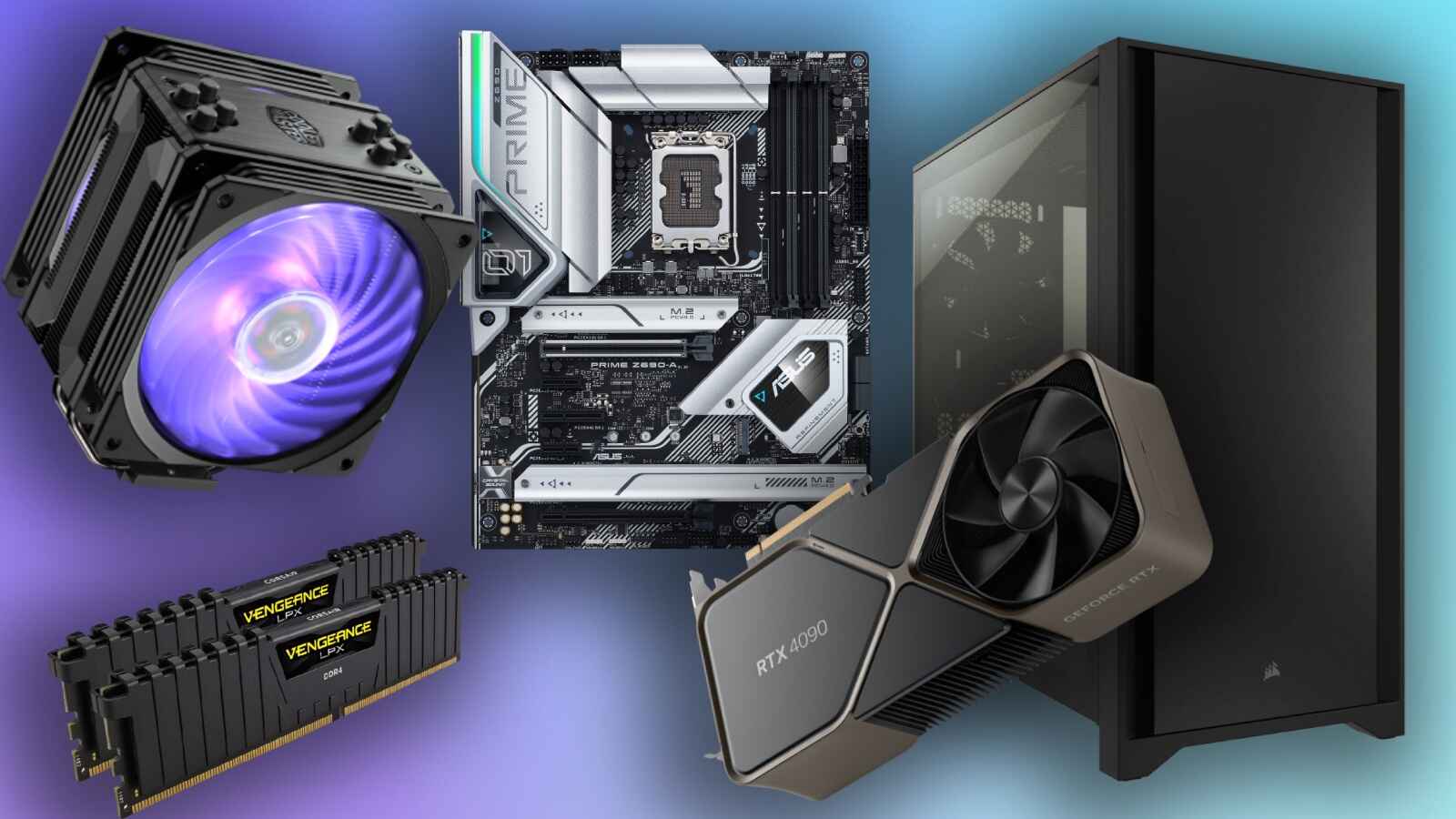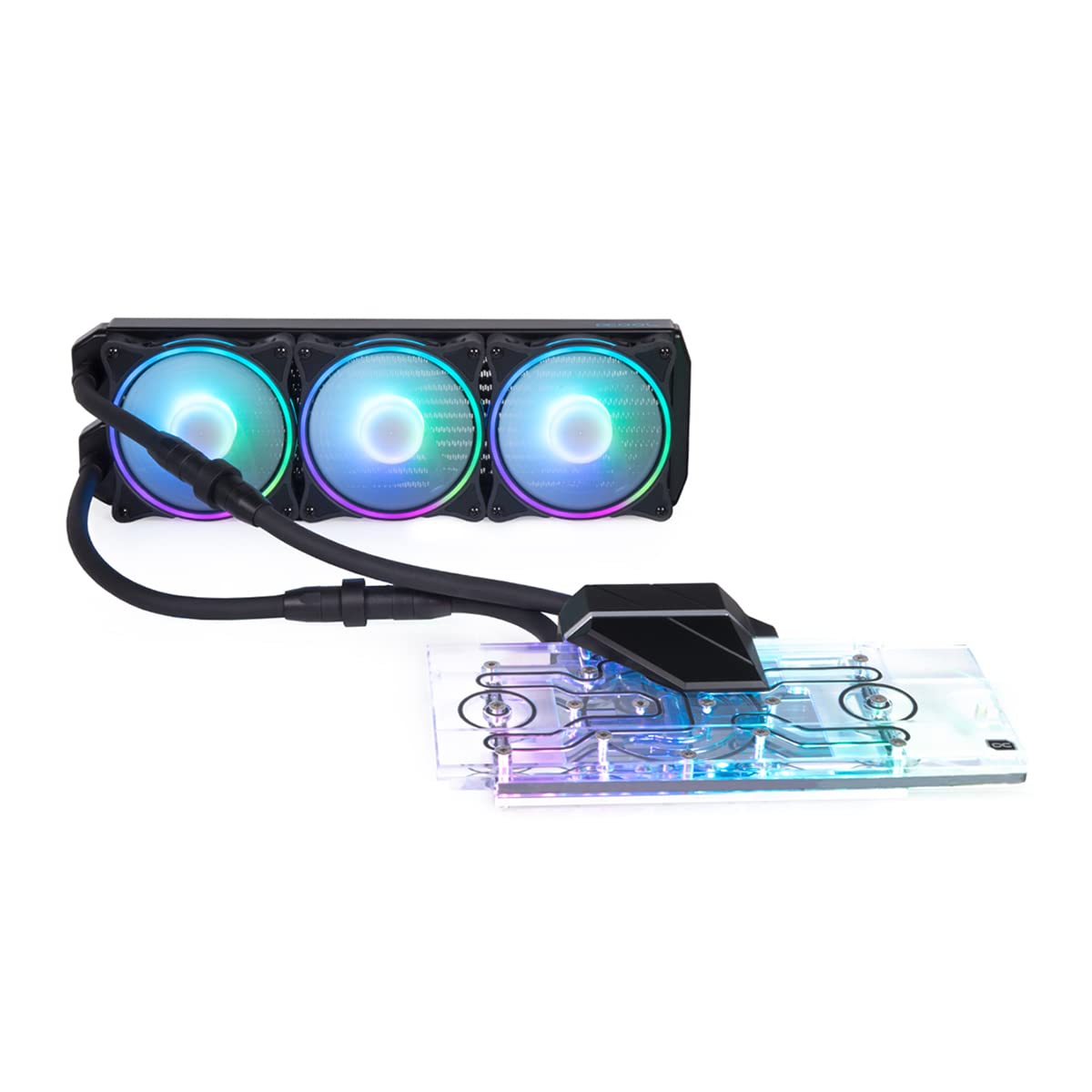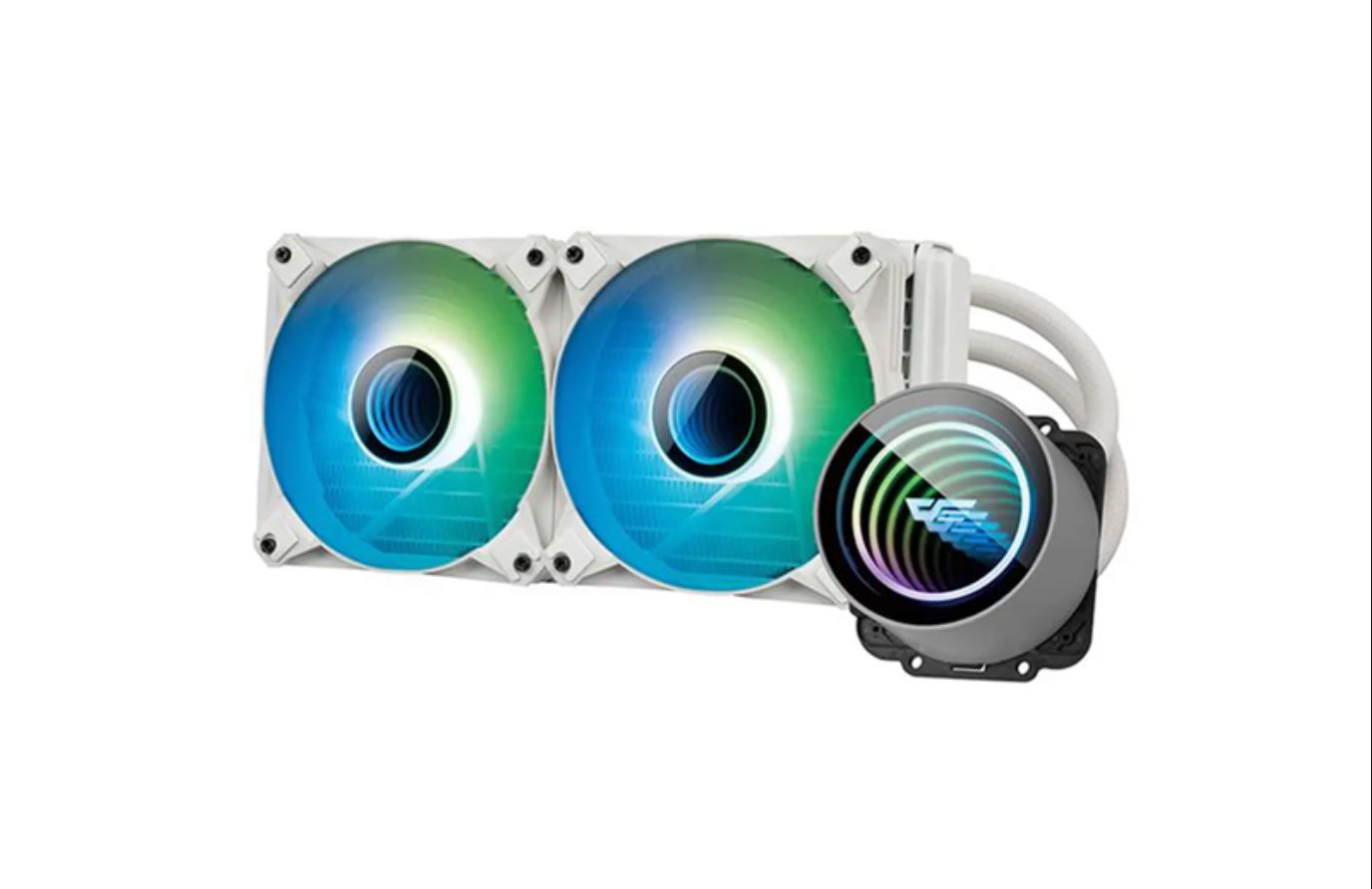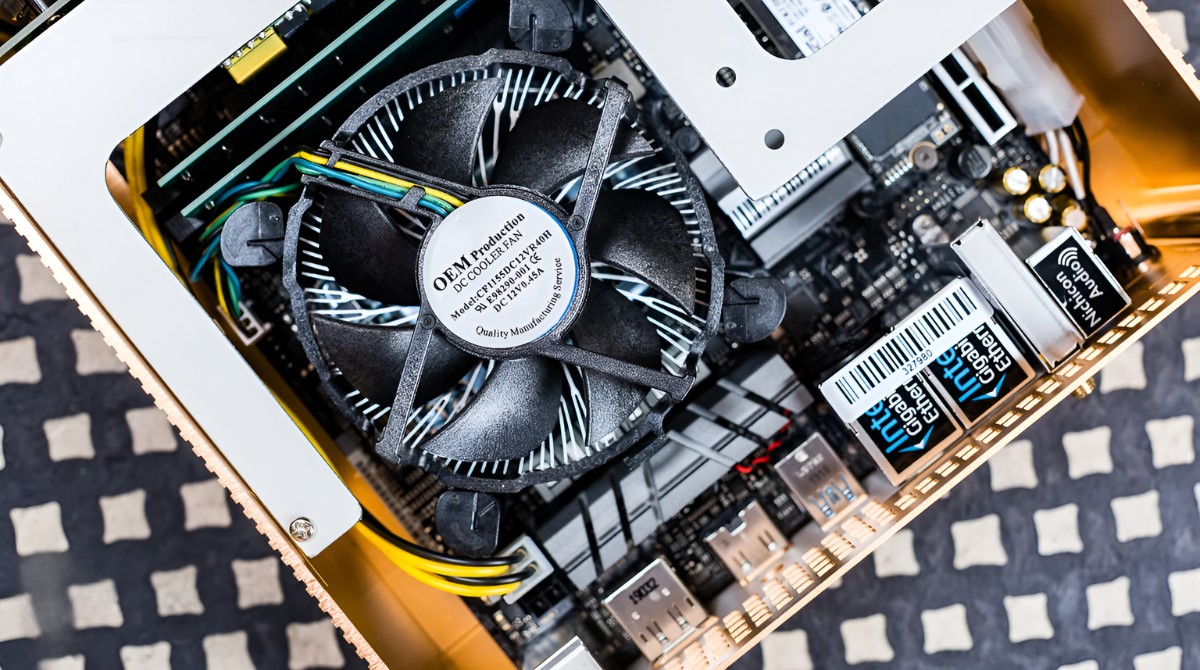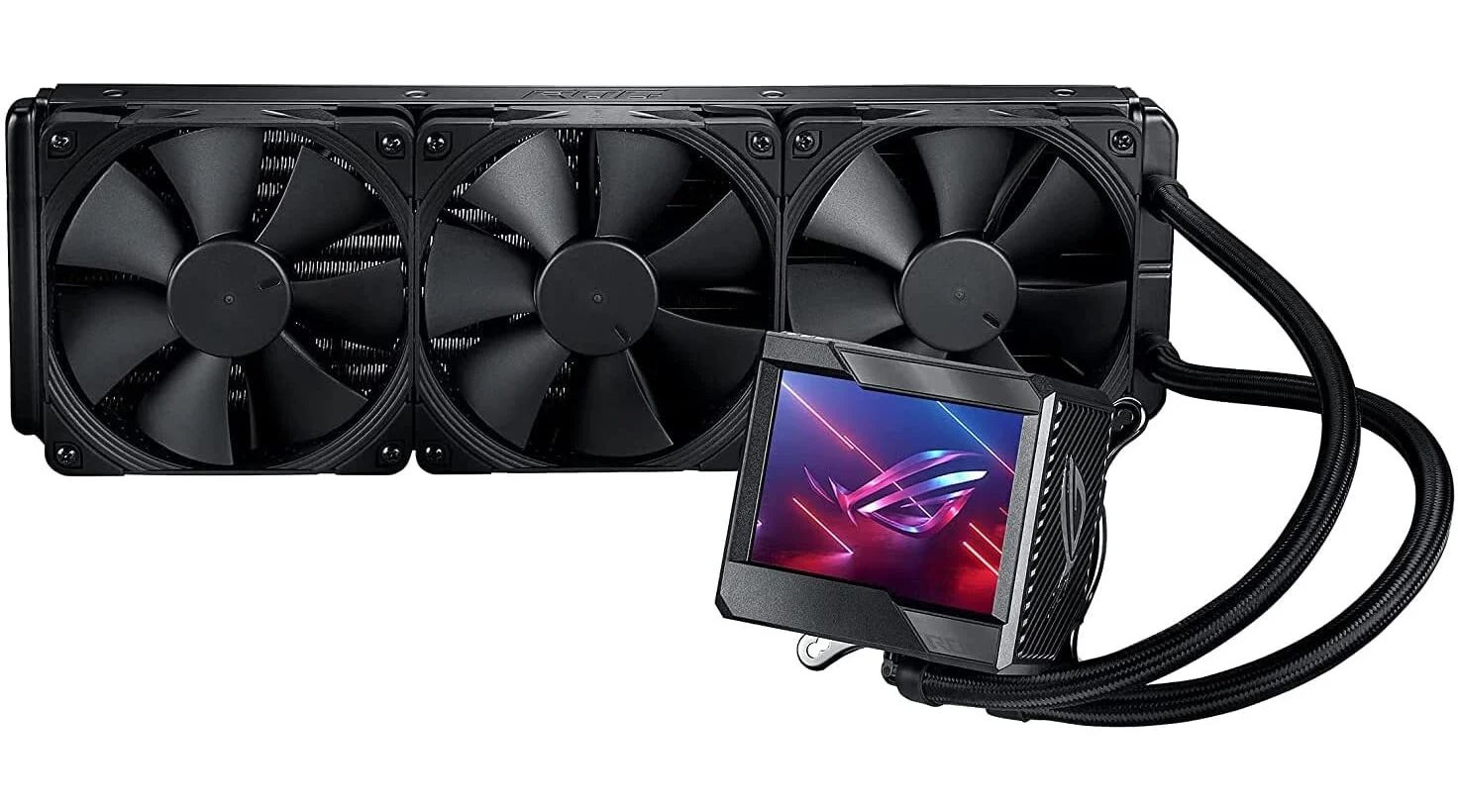Introduction
Welcome to the world of CPU coolers! If you’re in the process of building or upgrading your computer, one component that you should carefully consider is the CPU cooler. A CPU cooler plays a crucial role in maintaining the temperature of your processor, preventing overheating and ensuring optimal performance.
When your CPU runs intensive tasks or operates at high clock speeds, it generates a significant amount of heat. If left unchecked, this heat can damage your CPU and cause system instability. This is where a CPU cooler comes in. Its primary function is to dissipate the heat generated by the CPU, keeping it at safe operating temperatures.
Choosing the right CPU cooler is essential to ensure the longevity and performance of your computer. With the wide variety of options available on the market, it can be overwhelming to make the right decision. In this article, we will guide you through the factors to consider when buying a CPU cooler, the different types available, and their pros and cons.
Whether you’re a casual user who occasionally engages in light gaming or a power user pushing your CPU to its limits, understanding the importance of a CPU cooler and finding the right one will make a significant difference in the performance and lifespan of your system.
So, let’s dive in and explore the world of CPU coolers!
Understanding the Importance of a CPU Cooler
Before we delve into the factors to consider when buying a CPU cooler, let’s first understand why it is an essential component for your computer.
A CPU (Central Processing Unit) is the brain of your computer. It handles all the calculations and instructions necessary for the functioning of your system. However, as it performs these operations, it generates heat. The more intensive the tasks, the greater the heat generated.
Excessive heat can have detrimental effects on your CPU. It can lead to thermal throttling, where the processor slows down to prevent overheating. This can result in a significant decrease in performance. Moreover, consistent exposure to high temperatures can shorten the lifespan of your CPU and even cause permanent damage.
That’s where a CPU cooler comes into play. Its primary function is to dissipate the heat produced by the CPU and maintain safe operating temperatures. A well-performing CPU cooler will help keep your processor running at its maximum potential, ensuring smooth and stable performance even during demanding tasks.
Not only does a CPU cooler protect your CPU, but it also indirectly safeguards other components of your system. When the CPU generates excessive heat, it can affect the overall temperature inside your computer case. This can have negative effects on the stability and performance of other components such as the graphics card, RAM, and motherboard.
By installing an effective CPU cooler, you can address these concerns and keep your entire system running optimally. It will prevent thermal throttling, prolong the lifespan of your CPU, and contribute to a more stable and reliable computer.
In addition to cooling the CPU, some CPU coolers also help in reducing noise. Stock coolers that come bundled with CPUs can often be noisy when the CPU is under load. Upgrading to a better aftermarket CPU cooler can not only improve cooling performance but also provide a quieter computing experience.
Now that we understand the importance of a CPU cooler, let’s move on to the next section and explore the factors to consider when buying one.
Factors to Consider When Buying a CPU Cooler
When it comes to choosing a CPU cooler, there are several factors that you should take into consideration. These factors will help you make an informed decision and ensure that the cooler you select is compatible with your needs and your computer’s configuration. Let’s explore these factors:
- CPU Socket Compatibility: The first and foremost factor to consider is the compatibility of the CPU cooler with your CPU socket. Different CPUs have different socket types, such as LGA, AM4, or TR4. Ensure that the cooler you choose supports your CPU’s socket to avoid any compatibility issues.
- Cooling Performance: The cooling performance of a CPU cooler is crucial to keep your processor at optimal temperatures. It is measured in terms of heat dissipation capacity and airflow. Look for coolers that have high heat dissipation ratings and efficient airflow to effectively keep your CPU cool.
- Type of Cooling: There are two main types of CPU coolers: air coolers and liquid coolers. Air coolers use fans and heatsinks to dissipate heat, while liquid coolers use water or liquid coolant. Consider your needs, budget, and system requirements when choosing between the two.
- Form Factor: The form factor of a CPU cooler refers to its size and dimensions. Ensure that the cooler you choose fits inside your computer case without any clearance issues. Consider factors such as the height of your case, available space around the CPU socket, and GPU clearance.
- Noise Level: The noise level of a CPU cooler is an important consideration, especially if you prefer a quieter computing experience. Check the noise level specifications of the cooler and select one that meets your preferences. Keep in mind that higher cooling performance often comes with slightly louder fans.
- Budget: Set a budget for your CPU cooler and look for options that fall within that range. There are coolers available at various price points, ranging from budget-friendly options to high-end, premium coolers with advanced features. Don’t forget to consider the price-performance ratio when making your decision.
By considering these factors, you can narrow down your options and choose a CPU cooler that meets your requirements. It’s essential to strike a balance between cooling performance, compatibility, noise level, and your budget to ensure the best possible cooling solution for your CPU.
Now that we have explored the factors to consider, let’s move on to the next section where we will compare air cooling and liquid cooling options.
Air Cooling vs. Liquid Cooling
When it comes to CPU coolers, there are primarily two types: air coolers and liquid coolers. Each type has its own advantages and considerations. Let’s take a closer look at air cooling and liquid cooling to help you make an informed decision:
- Air Cooling: Air coolers are the most common and widely used type of CPU coolers. They consist of a heatsink and a fan(s) that work together to dissipate heat from the CPU. Air coolers are known for their reliability, affordability, and ease of installation. They come in various sizes, with larger heatsinks and fans offering better cooling performance. Air coolers are also generally quieter than liquid coolers.
- Liquid Cooling: Liquid coolers, also known as all-in-one (AIO) coolers, use a pump, radiator, and liquid coolant to dissipate heat from the CPU. They provide excellent cooling performance and are ideal for overclocking or high-end gaming setups. Liquid coolers are generally more expensive than air coolers but offer more efficient heat dissipation. They are also known to take up less space and provide a cleaner aesthetic due to their simplified design.
When deciding between air cooling and liquid cooling, consider your specific needs and system requirements. If you have a budget-conscious build, need a cooler that is easy to install, and do not plan on heavy overclocking, an air cooler might be a suitable choice. On the other hand, if you have a high-performance gaming rig, want to push your CPU to its limits, and have space constraints, a liquid cooler might be a better fit.
It’s important to note that both air coolers and liquid coolers can provide effective cooling solutions, so your decision ultimately depends on your preferences, budget, and specific use case. Whichever option you choose, ensure it is compatible with your CPU socket, aligns with your cooling requirements, and fits within the form factor of your computer case.
Now that we have compared air cooling and liquid cooling, let’s explore the different types of CPU coolers in the next section.
Types of CPU Coolers
When it comes to CPU coolers, there are several types available, each with its own design and cooling mechanism. Understanding the different types can help you make an informed decision based on your specific needs and preferences. Let’s explore the most common types of CPU coolers:
- Stock Coolers: Stock coolers, also known as reference coolers, are the coolers that come bundled with CPUs. They are designed to provide basic cooling performance and are often suitable for casual users who don’t engage in heavy workloads or overclocking. While stock coolers may be sufficient for basic tasks, they tend to be louder and less efficient than aftermarket coolers.
- Tower Coolers: Tower coolers are the most popular type of aftermarket CPU coolers. They consist of a tower-shaped heatsink and one or more fans attached to it. The vertical orientation helps maximize heat dissipation, and the fans provide effective airflow. Tower coolers come in different sizes, with larger ones offering better cooling performance. They are compatible with most CPU sockets and provide a good balance between cost, performance, and noise levels.
- Low-profile Coolers: Low-profile coolers are designed specifically for smaller form factor cases or systems with height restrictions. They have a compact design and come with a smaller heatsink and fan(s). While low-profile coolers may not provide the same level of cooling performance as tower coolers, they are suitable for compact builds where space is limited.
- All-in-One Liquid Coolers: All-in-one (AIO) liquid coolers, as mentioned earlier, consist of a pump, radiator, and liquid coolant. They provide excellent cooling performance and are easy to install compared to custom liquid cooling setups. AIO coolers are available in different radiator sizes, such as 120mm, 240mm, or 360mm, and offer various fan configurations for optimal heat dissipation.
- Custom Liquid Cooling: Custom liquid cooling setups are the most advanced and expensive cooling option. They involve building a customized cooling solution using separate components, such as water blocks, pumps, radiators, tubing, and coolant. Custom liquid cooling offers the best cooling performance and is commonly used by enthusiasts and overclockers who desire maximum temperature control and aesthetics. However, they require more maintenance, expertise, and investment compared to other types of coolers.
When choosing a CPU cooler, consider the type that best suits your needs, budget, and system requirements. Tower coolers and AIO liquid coolers are popular choices for most users, providing a good balance between cost, performance, and ease of installation.
Now that we’ve explored the different types of CPU coolers, let’s move on to the next section where we will discuss the pros and cons of stock coolers.
Stock Coolers: Pros and Cons
Stock coolers, also known as reference coolers, are the coolers that come bundled with CPUs. They are designed to provide basic cooling performance and are often included in the package by the CPU manufacturer. Let’s take a closer look at the pros and cons of using stock coolers:
- Pros:
- Cost: One of the major advantages of stock coolers is that they are included with the CPU at no additional cost. This makes them an attractive option for budget-conscious users who don’t want to spend extra money on an aftermarket cooler.
- Compatibility: Stock coolers are designed specifically for the CPU they come with, ensuring full compatibility out of the box. You don’t have to worry about finding a cooler that fits your CPU socket.
- Easy Installation: Installing a stock cooler is generally straightforward as they are specifically designed to be user-friendly and require minimal additional components or accessories.
- Cons:
- Performance: Stock coolers provide basic cooling performance, which is usually sufficient for normal usage and non-demanding tasks. However, they may struggle to handle heavy workloads or overclocking, as they are not optimized for high-performance cooling.
- Noise: Stock coolers tend to produce more noise compared to aftermarket coolers. The included fans may not be as efficient or have advanced noise reduction features, resulting in louder operation, especially under heavy loads.
- Limited Upgrade Options: If you plan on upgrading your system in the future or want better cooling performance, stock coolers may not be the best option. They are typically designed with the bare minimum specifications and lack the customization and performance capabilities of aftermarket coolers.
Overall, stock coolers can be a viable choice for users who have budget limitations or engage in casual computing tasks that don’t require intensive cooling. However, if you plan on pushing your CPU to its limits, overclocking, or want quieter operation, investing in an aftermarket cooler is recommended.
Now that we’ve discussed the pros and cons of stock coolers, let’s move on to the next section where we will explore the advantages and disadvantages of tower coolers.
Tower Coolers: Pros and Cons
Tower coolers are a popular choice among computer enthusiasts and gamers due to their efficient performance and ease of installation. Let’s take a closer look at the pros and cons of using tower coolers:
- Pros:
- Cooling Performance: Tower coolers typically offer excellent cooling performance, thanks to their large heatsinks and multiple heat pipes. They are designed to efficiently dissipate heat from the CPU, allowing for better temperature management and improved overall system performance.
- Compatibility: Tower coolers are compatible with a wide range of CPU sockets, making them suitable for most computer systems. You can easily find a tower cooler that fits your specific CPU socket, ensuring hassle-free installation.
- Quiet Operation: Many tower coolers come equipped with high-quality fans that are designed for optimal airflow and noise reduction. This results in quieter operation, even during heavy CPU loads, providing a more pleasant computing experience.
- Cost-Effective: Tower coolers offer a cost-effective solution for better cooling performance. Compared to liquid coolers or custom cooling setups, tower coolers are often more affordable while still providing excellent heat dissipation capabilities.
- Cons:
- Height and Clearance: Tower coolers tend to be taller than other types of coolers, which might pose a problem if you have a compact or small form-factor case. Make sure to check your case’s dimensions and the clearance around the CPU socket to ensure that the tower cooler will fit properly.
- Installation Space: Due to their size, installing a tower cooler can be trickier compared to stock coolers or low-profile coolers. The installation process may require more effort and precision to ensure proper alignment and tight mounting.
- Aesthetics: Tower coolers, though highly effective, can be bulky and may obstruct the view of other components, such as RGB RAM modules or the motherboard’s VRM heatsinks. Consider the overall aesthetics of your system if looks are important to you.
Tower coolers strike a good balance between performance, affordability, and ease of installation, making them an attractive choice for many users. They offer excellent cooling performance and are suitable for both gaming rigs and workstation systems.
Now that we’ve explored the pros and cons of tower coolers, let’s move on to the next section where we will discuss the advantages and disadvantages of low-profile coolers.
Low-profile Coolers: Pros and Cons
Low-profile coolers are specifically designed for compact computer cases or systems with height restrictions. They offer a balance between cooling performance and space-saving design. Let’s examine the pros and cons of using low-profile coolers:
- Pros:
- Space-Saving Design: Low-profile coolers are designed to fit within small form-factor cases or systems with limited clearance. They are compact and have a low height profile, allowing for efficient cooling without obstructing other components or causing interference.
- Compatibility: These coolers are designed to be compatible with a wide range of CPU sockets, similar to tower coolers. This ensures that you can find a low-profile cooler that matches your specific CPU socket requirements without compatibility issues.
- Silent Operation: While low-profile coolers may not offer the same level of cooling performance as larger coolers, they are generally designed for silent operation. Many low-profile coolers come equipped with low-noise fans or use advanced fan control technology to minimize noise levels.
- Lower Power Consumption: Due to their size and design, low-profile coolers tend to have lower power consumption compared to larger coolers. This can be advantageous for energy-conscious users or those looking to reduce their system’s overall power draw.
- Cons:
- Limited Cooling Performance: The compact design of low-profile coolers limits their cooling capacity compared to larger tower coolers or liquid cooling solutions. They may not be as effective in dissipating heat from high-end or overclocked CPUs, making them more suitable for low to moderate thermal loads.
- Restricted Overclocking Potential: Due to the limited cooling capability, low-profile coolers may not be able to handle heavy overclocking. If you are planning to push your CPU beyond its stock speeds, a more powerful cooling solution may be necessary.
- Higher Noise at Full Load: While low-profile coolers are generally designed for silent operation, they may produce more noise when the CPU is under heavy load or during demanding tasks. The smaller fan size and restricted airflow can lead to increased noise levels compared to larger coolers.
Low-profile coolers provide a space-saving and efficient cooling solution for compact systems. They are an ideal choice for small form-factor builds or situations where space is limited. However, they may not be the best option for users who require high cooling performance or plan to overclock their CPU.
Now that we have explored the pros and cons of low-profile coolers, let’s move on to the next section where we will discuss the advantages and disadvantages of all-in-one liquid coolers.
All-in-One Liquid Coolers: Pros and Cons
All-in-One (AIO) liquid coolers provide a combination of efficiency and convenience, making them a popular choice among enthusiasts and gamers. Let’s explore the pros and cons of using all-in-one liquid coolers:
- Pros:
- High Cooling Performance: AIO liquid coolers excel in cooling performance, offering excellent heat dissipation capabilities. The liquid coolant transfers heat more efficiently than air, allowing for better temperature management and improved CPU overclocking potential.
- Ease of Installation: AIO coolers are pre-filled and come with an all-in-one design, meaning they don’t require any assembly or complex plumbing. They are generally easy to install, even for those with limited technical expertise.
- Space-Saving Design: AIO coolers have a compact design compared to custom liquid cooling setups. They consist of a radiator, pump, tubing, and CPU water block integrated into a single unit, which saves space in your computer case and provides a cleaner aesthetic.
- Reduced Noise Levels: Liquid coolers tend to be quieter than air coolers, as most AIO coolers come with larger radiators and fans that can operate at lower and quieter speeds while still providing excellent cooling performance.
- Cons:
- Higher Cost: Compared to air coolers, AIO liquid coolers are generally more expensive. The additional cost is attributed to the complexity of the cooler, the included radiator, and the liquid cooling components. AIO coolers are often considered a premium cooling solution.
- Potential for Leaks: While AIO coolers are designed with reliability and leak prevention measures, there is always a small risk of leaks. However, the chances of a significant leak causing damage are relatively low compared to custom liquid cooling setups.
- Limited Customization: AIO coolers have limited customization options compared to custom liquid cooling setups. The components are pre-configured and cannot be easily modified or upgraded. If you prefer extensive customization options, a custom liquid cooling solution may be more suitable.
- Radiator Placement: AIO coolers require sufficient space for radiator mounting within your computer case. It’s essential to check compatibility and ensure that your case can accommodate the chosen AIO cooler’s radiator size.
All-in-one liquid coolers strike a balance between cooling performance, ease of installation, and aesthetics. They are an excellent choice for users seeking high-performance cooling capabilities with minimal effort and maintenance.
Now that we’ve discussed the pros and cons of all-in-one liquid coolers, let’s move on to the next section where we will explore the advantages and disadvantages of custom liquid cooling setups.
Custom Liquid Cooling: Pros and Cons
Custom liquid cooling setups are the pinnacle of cooling performance and aesthetics, but they also require more expertise, effort, and investment. Let’s discuss the pros and cons of choosing a custom liquid cooling solution:
- Pros:
- Ultimate Cooling Performance: Custom liquid cooling offers unparalleled cooling performance, allowing you to achieve extremely low temperatures even under heavy overclocking. The flexibility to choose high-quality components and optimize the cooling loop provides maximum cooling efficiency.
- Aesthetic Appeal: Custom liquid cooling setups are visually stunning and can add a unique and personalized touch to your system. The ability to customize the coolant color, tubing design, and potential for RGB lighting allows for a visually appealing build.
- Quiet Operation: Custom liquid cooling can provide quieter operation compared to air coolers or AIO liquid coolers. The use of larger radiators, low noise fans, and efficient heat dissipation contribute to a quieter computing experience.
- Component Cooling: With custom liquid cooling, you have the option to cool other components, such as graphics cards and VRMs, in addition to the CPU. This ensures optimal performance and longevity for all critical parts of your system.
- Cons:
- Complexity: Custom liquid cooling setups are complex to build and require technical expertise. It involves selecting the right components, designing and assembling the cooling loop, and proper maintenance. Beginners may find it challenging to set up and maintain a custom liquid cooling system.
- Cost: Custom liquid cooling setups can be significantly more expensive than other cooling solutions. The cost includes not only the specialized components like water blocks, pumps, radiators, and tubing, but also additional considerations like coolant and maintenance accessories.
- Maintenance and More Potential for Leaks: Custom liquid cooling systems require periodic maintenance to ensure optimal performance and prevent potential issues like coolant evaporation or clogging. They also carry a higher risk of leaks, especially if not installed or maintained correctly.
- Space Considerations: Custom liquid cooling setups require ample space within your case to accommodate the radiators, pumps, and reservoirs. It is essential to plan for sufficient space and consider the compatibility of your components with the chosen cooling solution.
Custom liquid cooling setups are reserved for enthusiasts who seek the ultimate cooling performance and are willing to dedicate the time, effort, and resources needed for its assembly and maintenance. They offer unparalleled cooling capabilities and allow for a high level of customization and visual appeal.
Now that we’ve explored the pros and cons of custom liquid cooling setups, let’s move on to the next section, where we will discuss the importance of ensuring compatibility with your CPU and motherboard.
Compatibility with Your CPU and Motherboard
When selecting a CPU cooler, it is crucial to ensure compatibility with your CPU and motherboard. Mismatched components can lead to installation issues, poor cooling performance, or even damage to your system. Let’s delve into the significance of compatibility:
CPU Compatibility: Different CPU coolers are designed to work with specific CPU socket types. It is essential to check the compatibility between your CPU and the cooler you intend to purchase. Common CPU socket types include Intel’s LGA and AMD’s AM4 or TR4. Ensuring compatibility between the CPU and cooler sockets is crucial.
Additionally, consider the power requirements of your CPU. Higher-end CPUs with greater power consumption and heat output may require more substantial cooling solutions. Verify that the chosen cooler is capable of handling the thermal demands of your CPU.
Motherboard Compatibility: The size and layout of your motherboard can also impact cooler compatibility, particularly regarding the cooler’s mounting mechanism and its potential to interfere with other components. Factors to consider include:
- CPU Cooler Height: Verify that the height of the cooler will fit within the available space within your computer case. Pay attention to CPU cooler clearance specifications provided by both the case manufacturer and cooler manufacturer.
- RAM Clearance: Tower coolers, especially larger ones, may obstruct RAM slots located near the CPU socket. Ensure that the height of your RAM modules does not interfere with the installed cooler.
- Graphics Card Clearance: Consider the size and positioning of your graphics card, as an oversized cooler may obstruct or interfere with the GPU, leading to compatibility issues.
- Fan Headers and Connectors: Ensure that your motherboard has sufficient fan headers and connectors to accommodate the CPU cooler’s fans. You may need to use fan splitters or adapters if the number of available headers is limited.
Checking the compatibility of your CPU cooler with both the CPU and motherboard will help you avoid compatibility issues and save valuable time and resources.
Now that we’ve covered compatibility considerations, let’s move on to discuss the importance of noise levels and cooling performance in the next section.
Noise Levels and Cooling Performance
When selecting a CPU cooler, it’s essential to consider both its noise levels and cooling performance. Striking the right balance between these factors will ensure an optimal computing experience. Let’s explore the importance of noise levels and cooling performance:
Noise Levels: The noise produced by a CPU cooler can significantly affect your overall computing experience. While some users prioritize maximum cooling performance regardless of noise, others prefer a quieter system. Consider the noise levels of the cooler, especially when the CPU is under heavy load, as higher cooling performance often results in more audible fan noise. Cooler manufacturers often provide noise specifications measured in decibels (dB), allowing you to choose a cooler that aligns with your desired noise level preferences.
Many coolers come with features like larger fan blades, fan speed control, or advanced noise reduction technologies to minimize noise output. Consider these features to strike a balance between cooling performance and noise levels based on your specific needs and noise tolerance.
Cooling Performance: The primary function of a CPU cooler is to dissipate heat and keep the CPU at safe operating temperatures. Cooling performance is crucial for maintaining CPU stability, preventing thermal throttling, and ensuring optimal performance, especially during demanding tasks like gaming or content creation.
There are various aspects to consider when evaluating cooling performance. These include the size and quality of the cooler’s heatsink, the number and efficiency of the fans, the design of the cooling fins, and the overall airflow. Cooler manufacturers often provide specifications related to heat dissipation capacity and air pressure, allowing you to assess a cooler’s cooling performance potential.
Keep in mind that cooling performance requirements may vary depending on your CPU, usage scenarios, and overclocking ambitions. Ensure that the cooler you choose can handle the thermal demands of your CPU and provide sufficient cooling performance for your specific needs.
By considering both noise levels and cooling performance, you can select a CPU cooler that strikes the ideal balance for your preferences and requirements. Ultimately, finding the right balance will enhance your overall computing experience, ensuring optimal cooling efficiency without excessive fan noise.
Now that we’ve explored the importance of noise levels and cooling performance, let’s move on to discuss budget considerations in the next section.
Budget Considerations
When it comes to choosing a CPU cooler, budget considerations play a vital role in the decision-making process. Understanding your budget and finding a cooler that fits within it will help you make an informed choice without overspending. Let’s explore the importance of budget considerations:
Cost-Performance Ratio: CPU coolers come in a wide range of price points, from budget-friendly options to high-end, premium coolers. It’s important to evaluate the cost-performance ratio to ensure you’re getting the best value for your money. Consider the cooling performance, build quality, and features offered by a cooler relative to its price.
While it can be tempting to opt for the most expensive cooler on the market, it may not always be necessary, especially if you have a limited budget or plan to use your computer for non-intensive tasks. Determine the level of cooling performance required for your usage and allocate your budget accordingly.
Usage Requirements: Your specific usage requirements and computing needs can influence the amount you should allocate for a CPU cooler. If you engage in heavy gaming, video editing, or other CPU-intensive tasks, a higher-performance cooler may be justified to prevent thermal throttling and maintain optimal CPU temperatures.
Alternatively, if you primarily use your computer for everyday tasks, internet browsing, and light productivity work, a more budget-friendly cooler may be sufficient. Assess your usage patterns and allocate your budget based on the cooling performance needs dictated by your specific workload.
Future Upgradability: Consider the longevity of your system and any potential future upgrades when assessing your budget for a CPU cooler. If you plan to upgrade your CPU or build a more powerful system down the line, it might be worth investing in a higher-quality cooler now to accommodate future changes.
However, if your current system is relatively stable, and you don’t anticipate major upgrades in the near future, you can focus on finding a cooler that offers a good balance of cost and performance without breaking the bank.
Ultimately, finding the right CPU cooler within your budget requires a thoughtful assessment of your specific needs, usage requirements, and future plans for your system. By striking a balance between cost and performance, you can make a budget-conscious decision without compromising on the cooling capabilities that your CPU requires.
Now that we’ve explored budget considerations, let’s move on to the concluding section where we will summarize the key points discussed in this article.
Conclusion
Choosing the right CPU cooler is crucial for maintaining the stability, performance, and longevity of your computer system. Throughout this article, we have explored various factors to consider when buying a CPU cooler, including the importance of understanding its role in temperature management and system protection.
We discussed the different types of CPU coolers available, such as stock coolers, tower coolers, low-profile coolers, all-in-one liquid coolers, and custom liquid cooling setups. Each type has its own advantages and considerations, allowing you to choose a cooling solution that best fits your needs, budget, and system requirements.
We emphasized the significance of ensuring compatibility between your CPU, motherboard, and the chosen cooler. Checking CPU socket compatibility, clearance for RAM and graphics cards, and the availability of fan headers are essential steps to avoid installation issues and ensure optimal performance.
Noise levels and cooling performance were explored as important considerations when selecting a CPU cooler. Striking the right balance between these factors can provide an optimal computing experience, where your system stays cool while maintaining a comfortable noise level.
Lastly, we discussed the importance of budget considerations. Finding a CPU cooler that provides the necessary cooling performance within your budget is essential. Allocating your budget based on your specific usage requirements and considering any future upgradability needs will help you make a well-informed decision.
By taking all these factors into account, you can select a CPU cooler that meets your specific needs, enhances the performance of your system, and ensures the longevity of your CPU. Remember to thoroughly research and compare options, read reviews, and consider professional advice if needed.
We hope this guide has provided valuable insights into the world of CPU coolers and assists you in making the right choice for your computer system. Happy cooling and happy computing!







